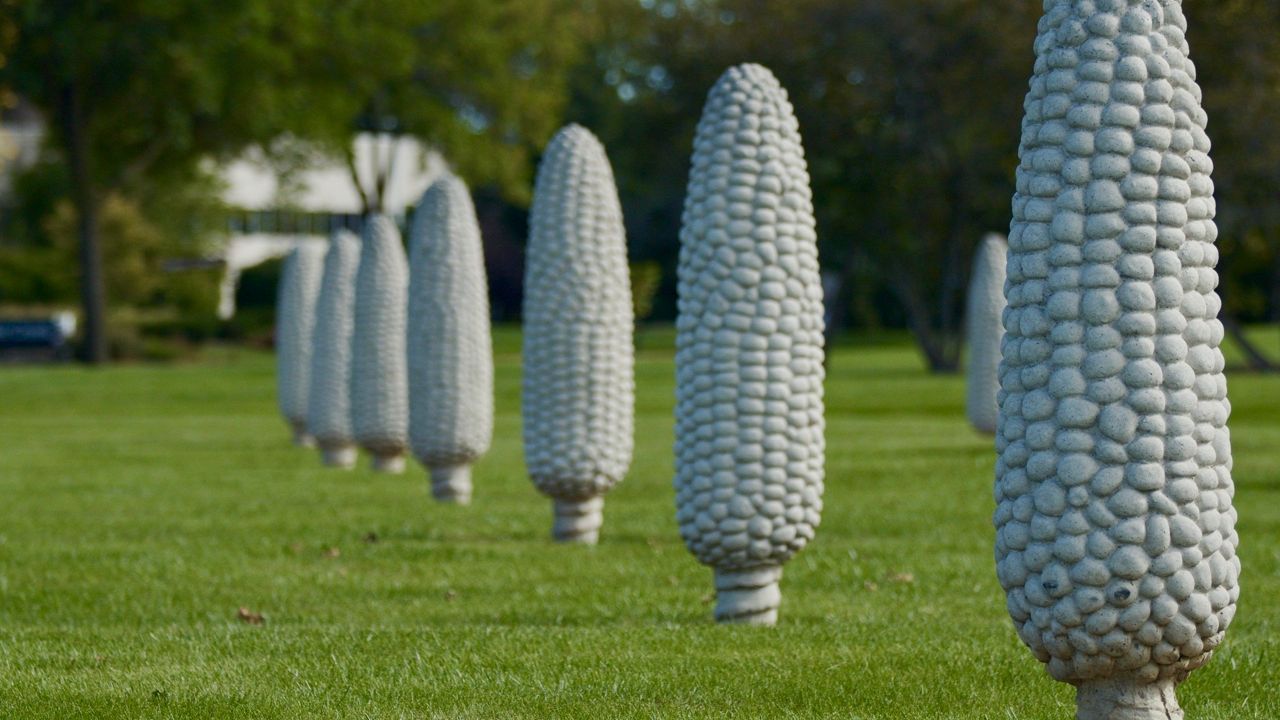DUBLIN, Ohio — Seeing corn crops in Ohio is no surprise, but there's one field in northwest Columbus that's unlike any other. The Field of Corn with Osage Orange Trees is a public work of art. It's celebrating 25 years since its debut.
The installation has 109 concrete ears of corn, each standing more than six feet tall and weights about 1500 pounds. It spans the Sam and Eulalia Frantz Park in Dublin, Ohio.
The Osage Orange Trees, paired with the art, are traditionally used to provide a border between one farm and the next. They also have a secretion that naturally repeals some bugs and other critters that you wouldn’t want around your food source.
David Guion is the Executive Director of the Dublin Arts Council. He said the roadside attraction is on former farmland that was owned by the Frantz family. It was gifted to the city “and then the city, in turn, approached the [Dublin] Arts Council to create a piece of public art,” said Guion.
Andy Vance, Spectrum News One Agriculture Expert, said the chosen crop is fitting. It pays tribute to Sam Frantz and his contribution to the development of hybridized corn.

“The way hybridized corn came about is we realized if we took a variety of corn and a different variety of corn and crossbred them, the resulting hybrid was much stronger, much healthier, more resistant to disease, and higher yielding. There were a lot of farmers in that time period, say between 1920 and really the 1960s, that took that art and that science and made it practical and were actually out in the field breeding, crossbreeding, and cross-pollinating those different varieties,” said Vance.
Frantz was one of those pioneers and helped establish a food that now feeds billions of people.
The landscape has drastically changed in the Columbus metropolitan area. Vance said, "I just think it’s important to harken back and remember what was here and the important role it played in the development of the region as a whole.”
According to the Field of Corn artist Malcolm Cochran, the piece symbolizes the death of agriculture and the emerging suburban landscape.
Guion said if you visit, you may "notice that the rows of corn are almost like a cemetery, an Arlington cemetery, where the rows are lined up in a certain dimension and format. It’s a very deep and meaningful piece, but then, it also is fun and, you know, a roadside attraction. So it has a playful part to it and a serious part.”
For more information on the Field of Corn with Osage Orange Trees and other public art in the City of Dublin, you can take a cellphone tour where you can listen to artists talk about the inspiration behind their work.



